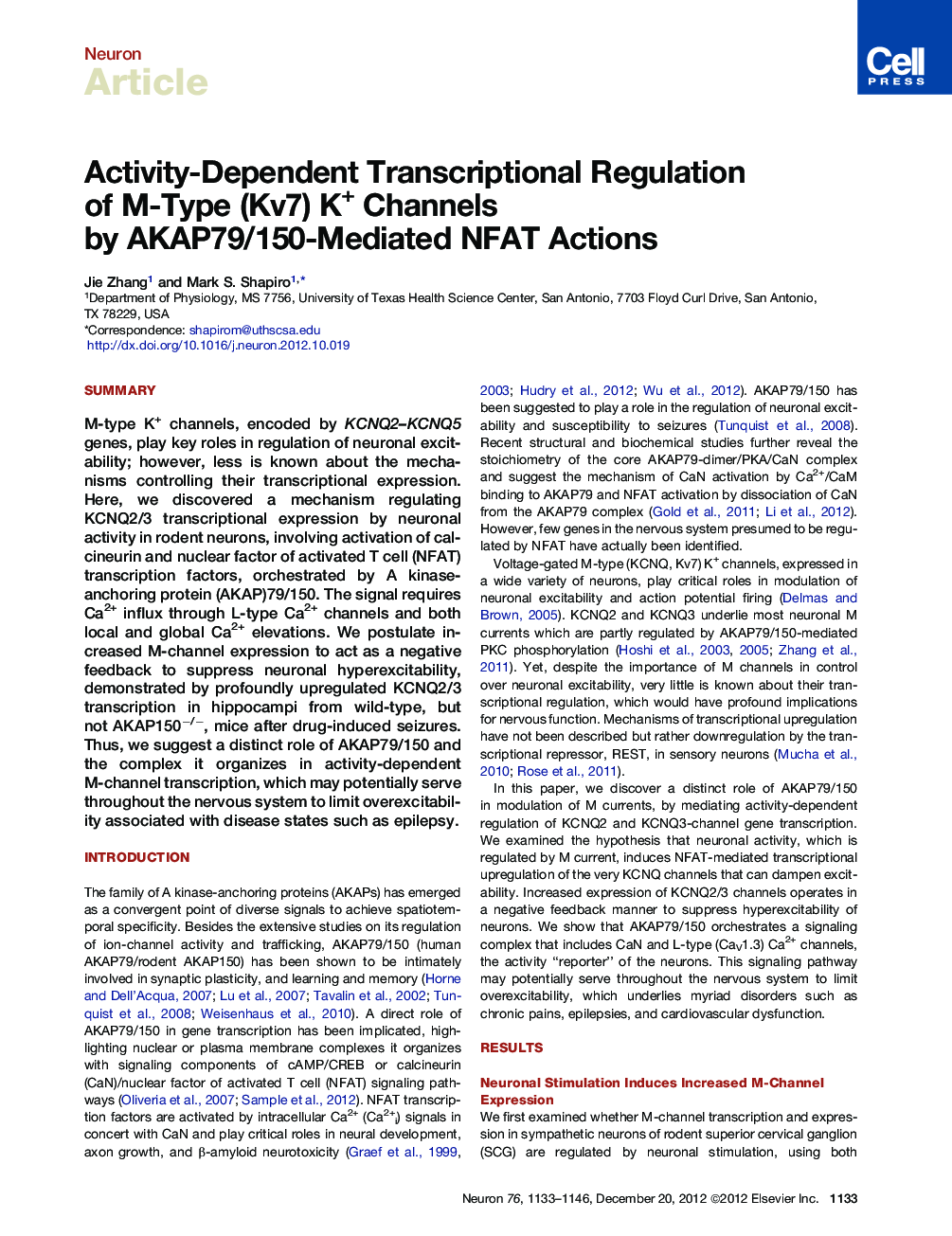| Article ID | Journal | Published Year | Pages | File Type |
|---|---|---|---|---|
| 4321221 | Neuron | 2012 | 14 Pages |
SummaryM-type K+ channels, encoded by KCNQ2–KCNQ5 genes, play key roles in regulation of neuronal excitability; however, less is known about the mechanisms controlling their transcriptional expression. Here, we discovered a mechanism regulating KCNQ2/3 transcriptional expression by neuronal activity in rodent neurons, involving activation of calcineurin and nuclear factor of activated T cell (NFAT) transcription factors, orchestrated by A kinase-anchoring protein (AKAP)79/150. The signal requires Ca2+ influx through L-type Ca2+ channels and both local and global Ca2+ elevations. We postulate increased M-channel expression to act as a negative feedback to suppress neuronal hyperexcitability, demonstrated by profoundly upregulated KCNQ2/3 transcription in hippocampi from wild-type, but not AKAP150−/−, mice after drug-induced seizures. Thus, we suggest a distinct role of AKAP79/150 and the complex it organizes in activity-dependent M-channel transcription, which may potentially serve throughout the nervous system to limit overexcitability associated with disease states such as epilepsy.
► Neuronal stimulation induces upregulation of M channels through CaN/NFAT signals ► NFAT nuclear translocation requires both local and global [Ca2+]i elevations ► AKAP79/150 is vital for NFAT activation and M-channel upregulation by stimulation ► Subjecting mice to seizures induces more M channels in hippocampus, using AKAP150
